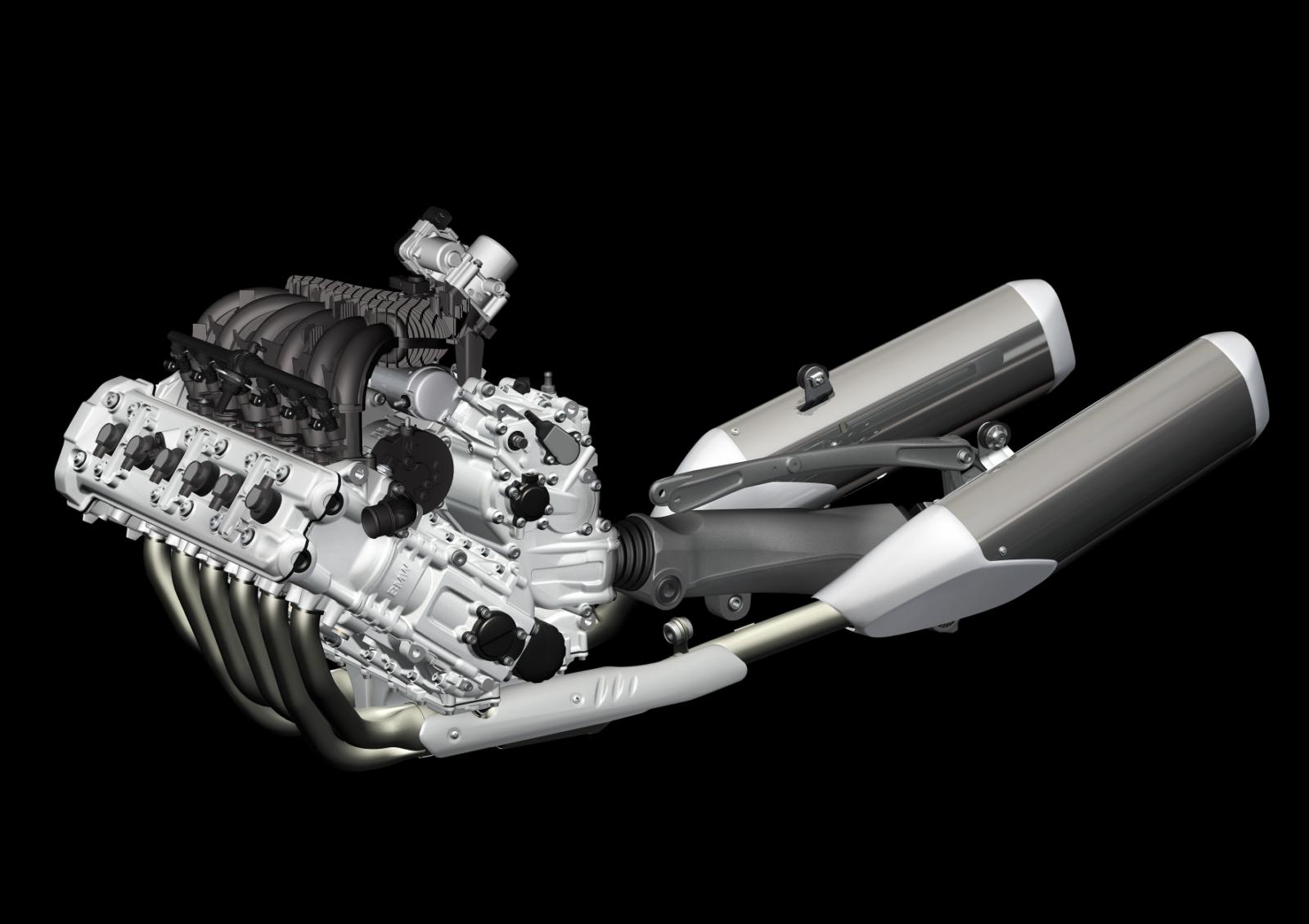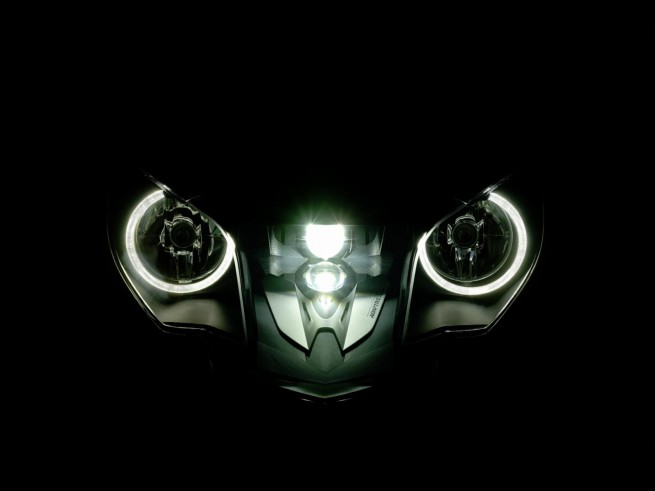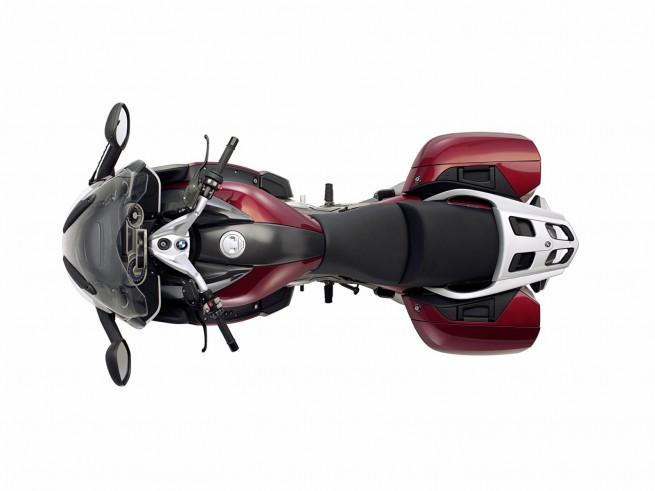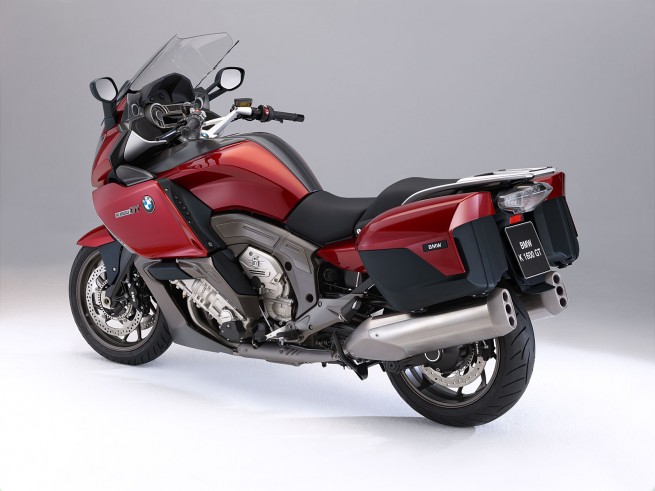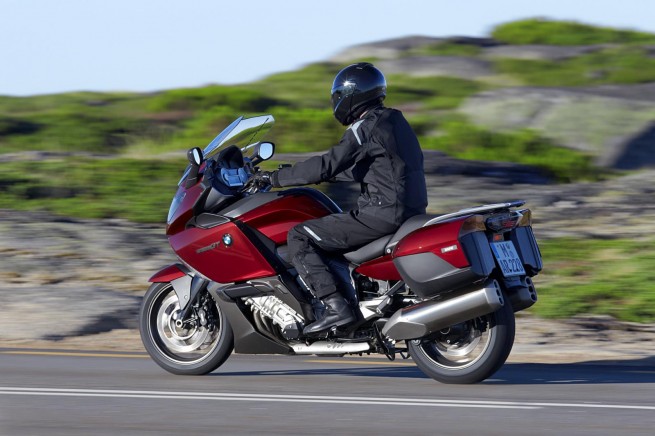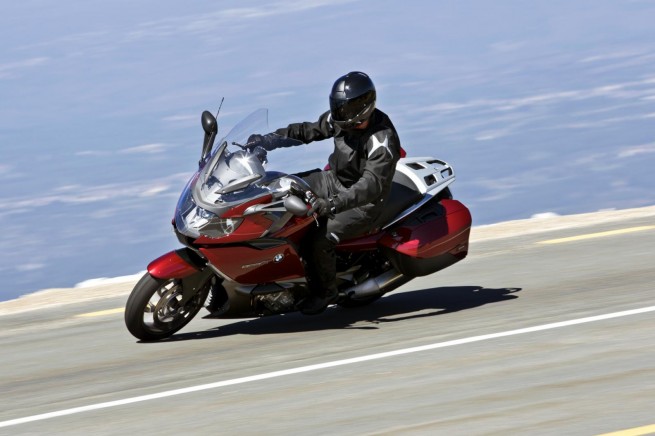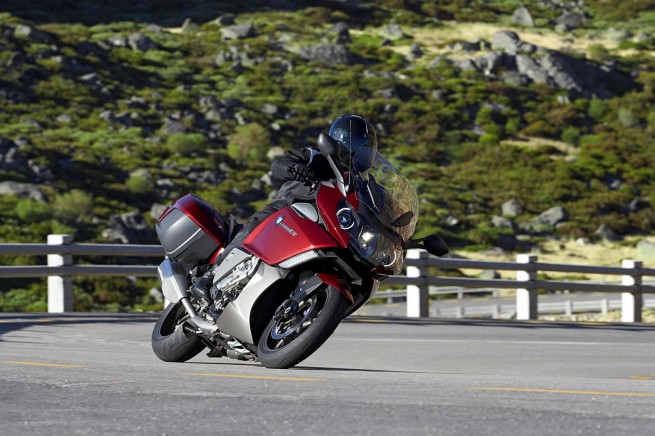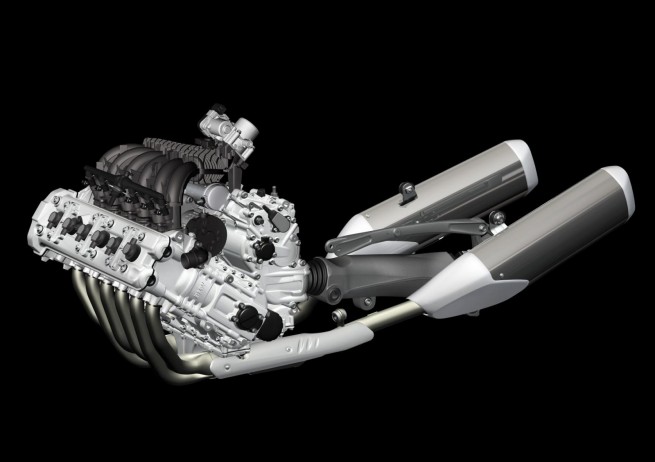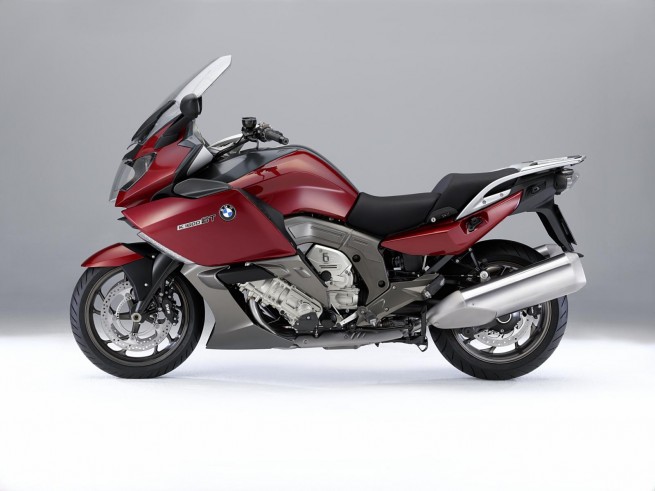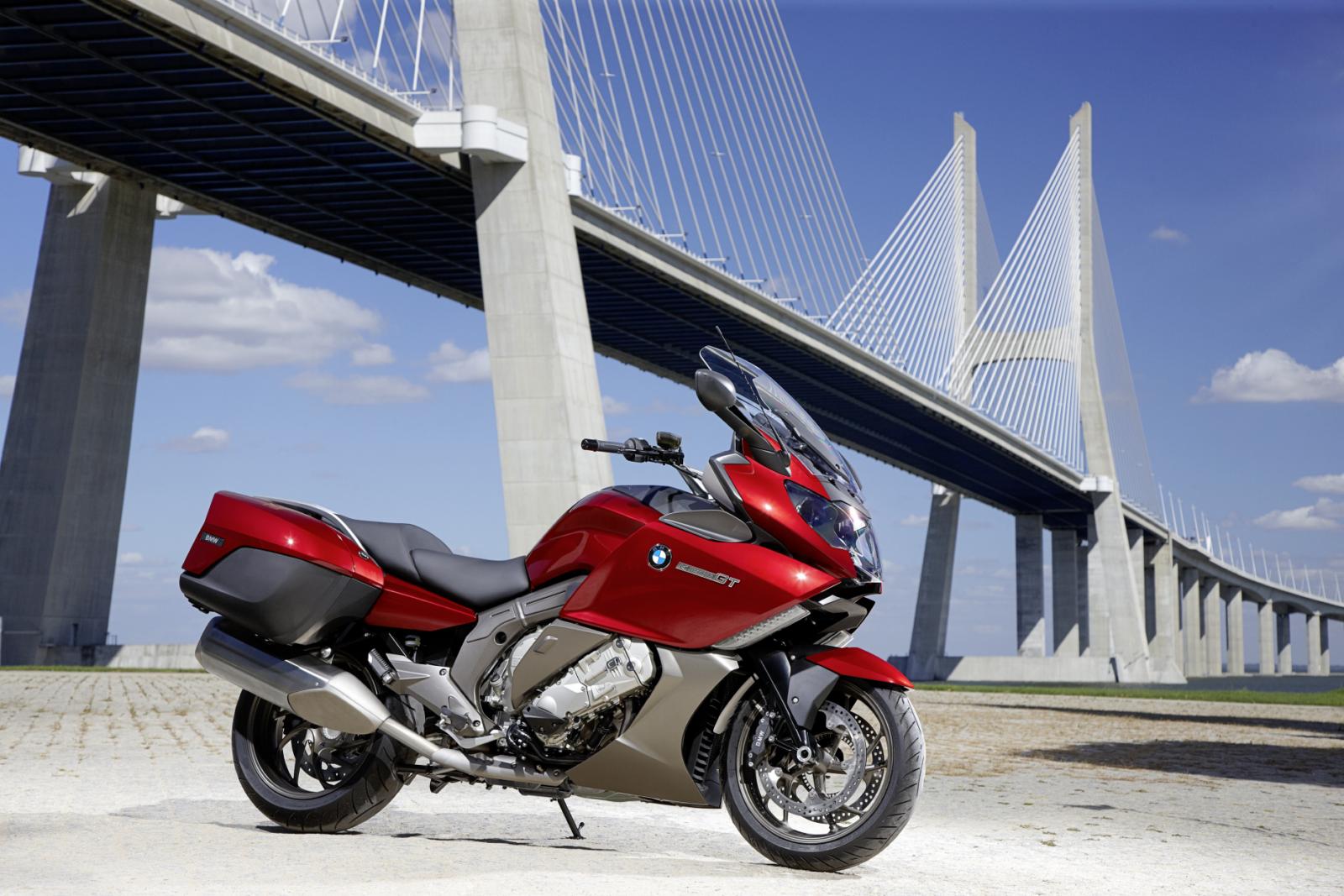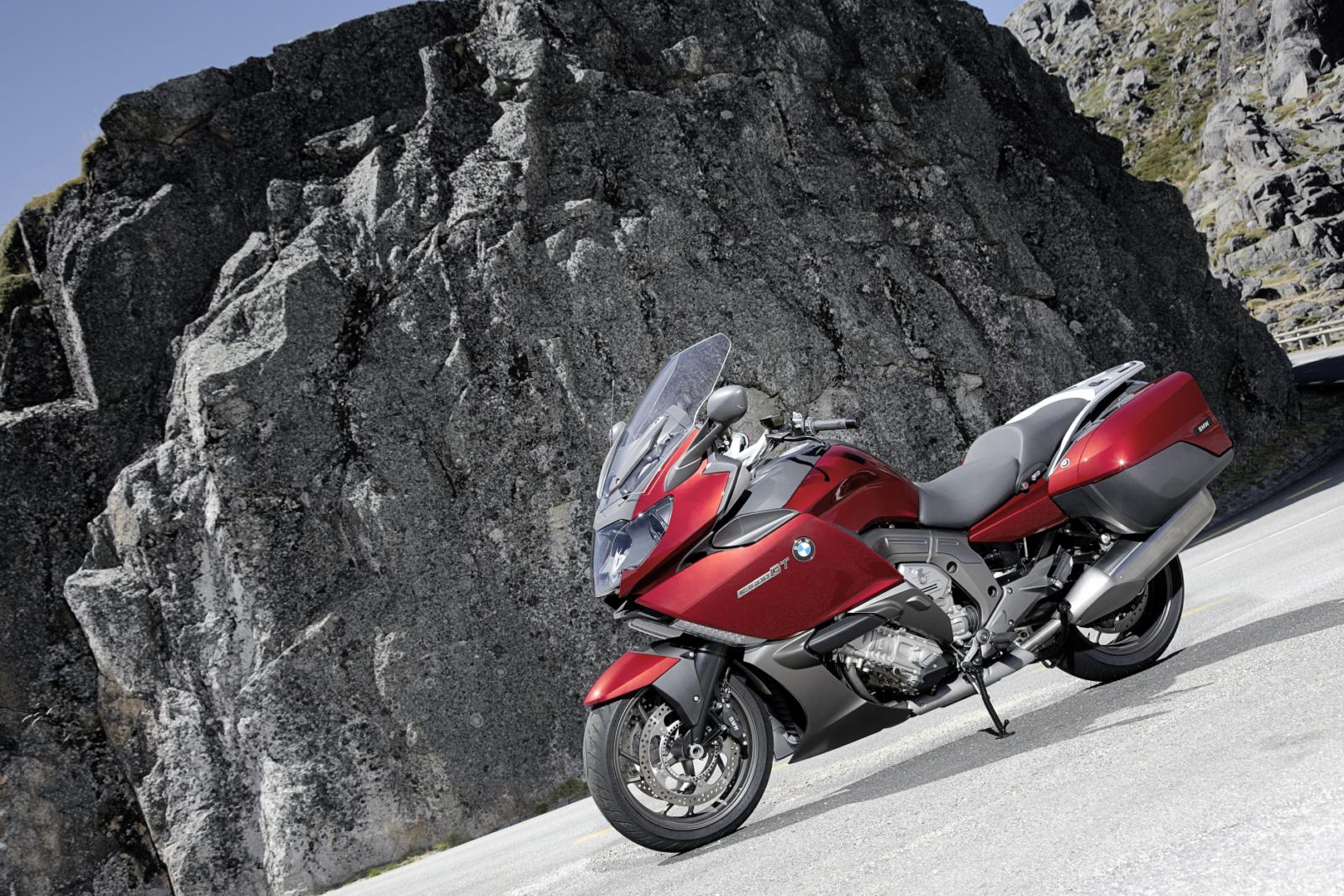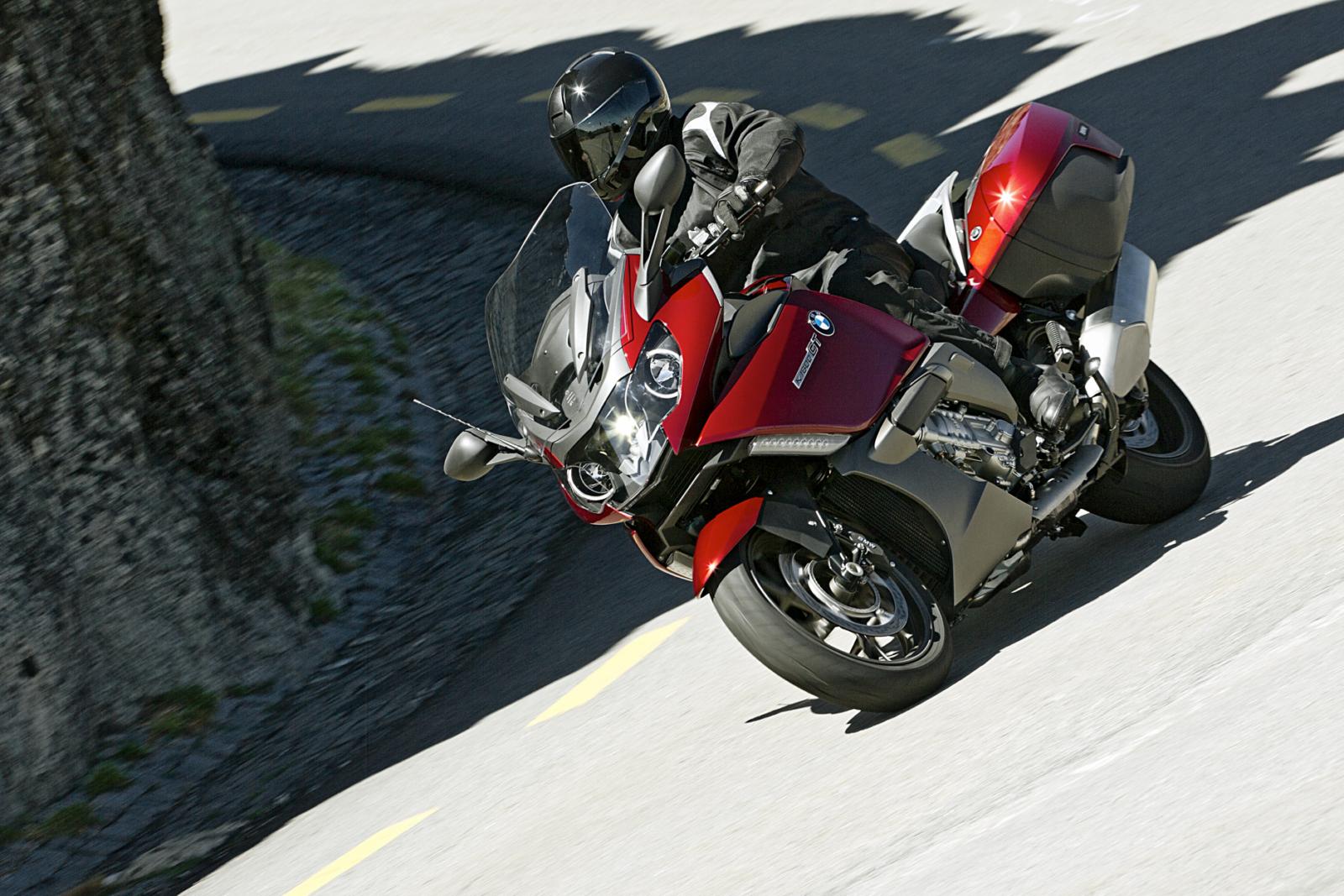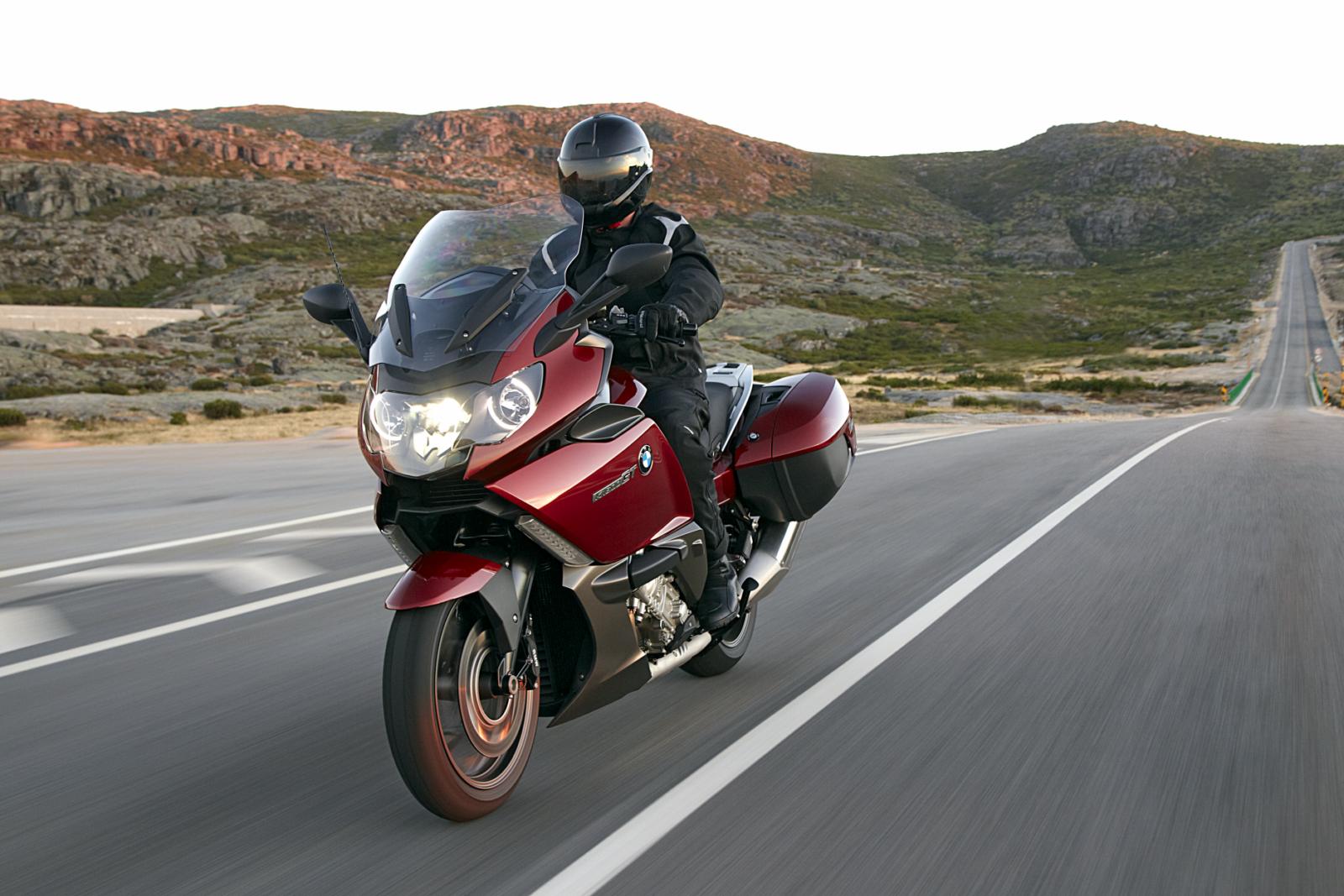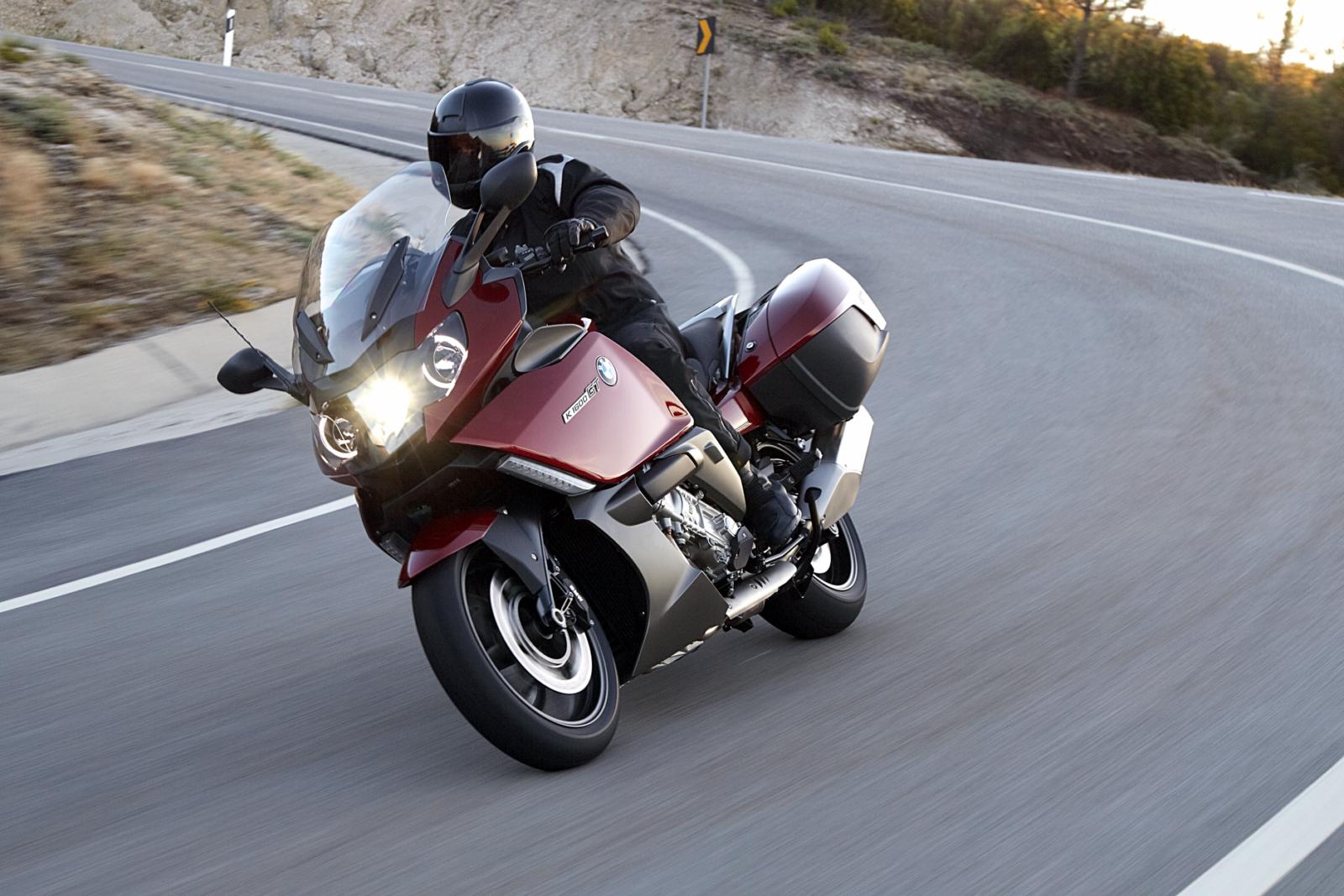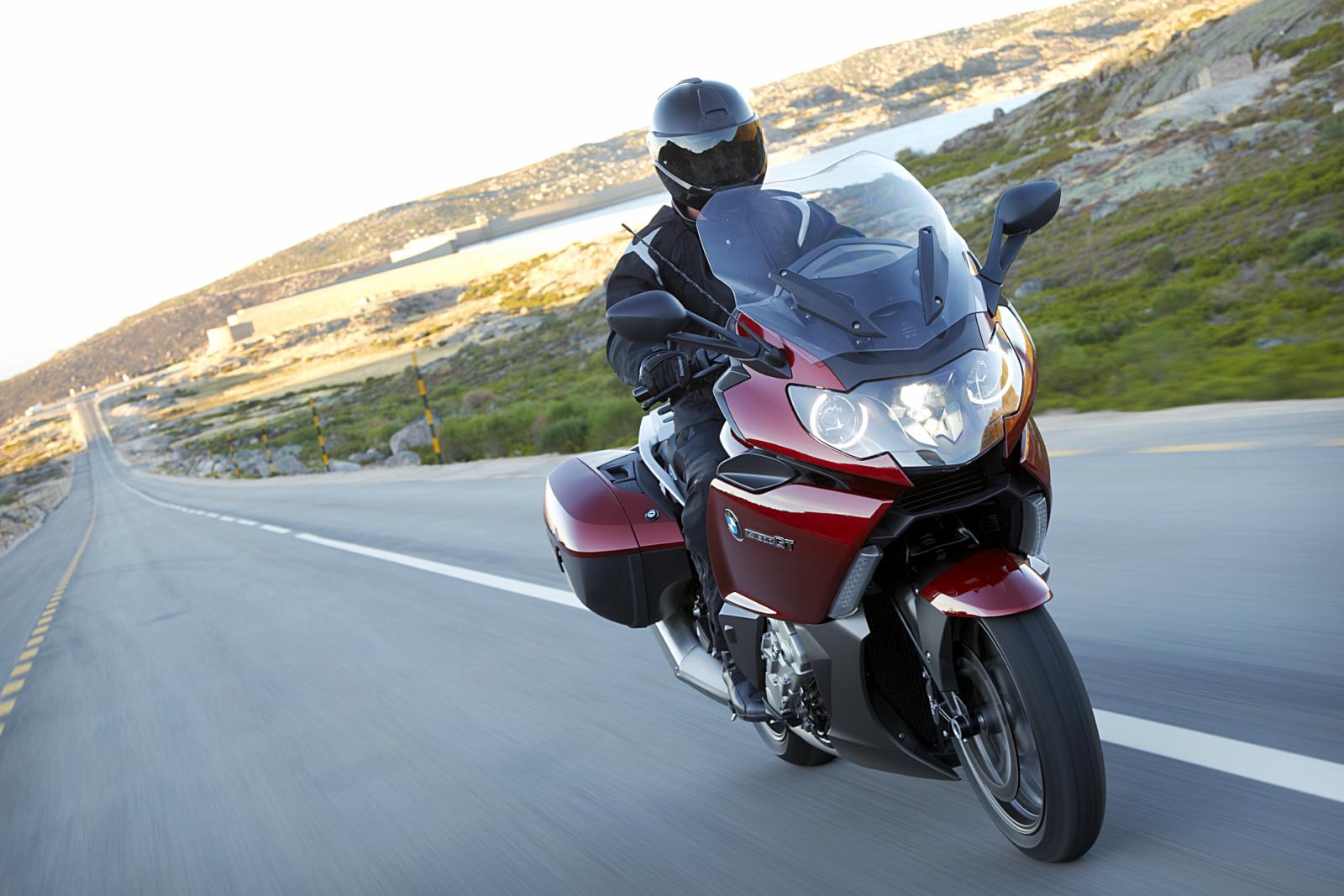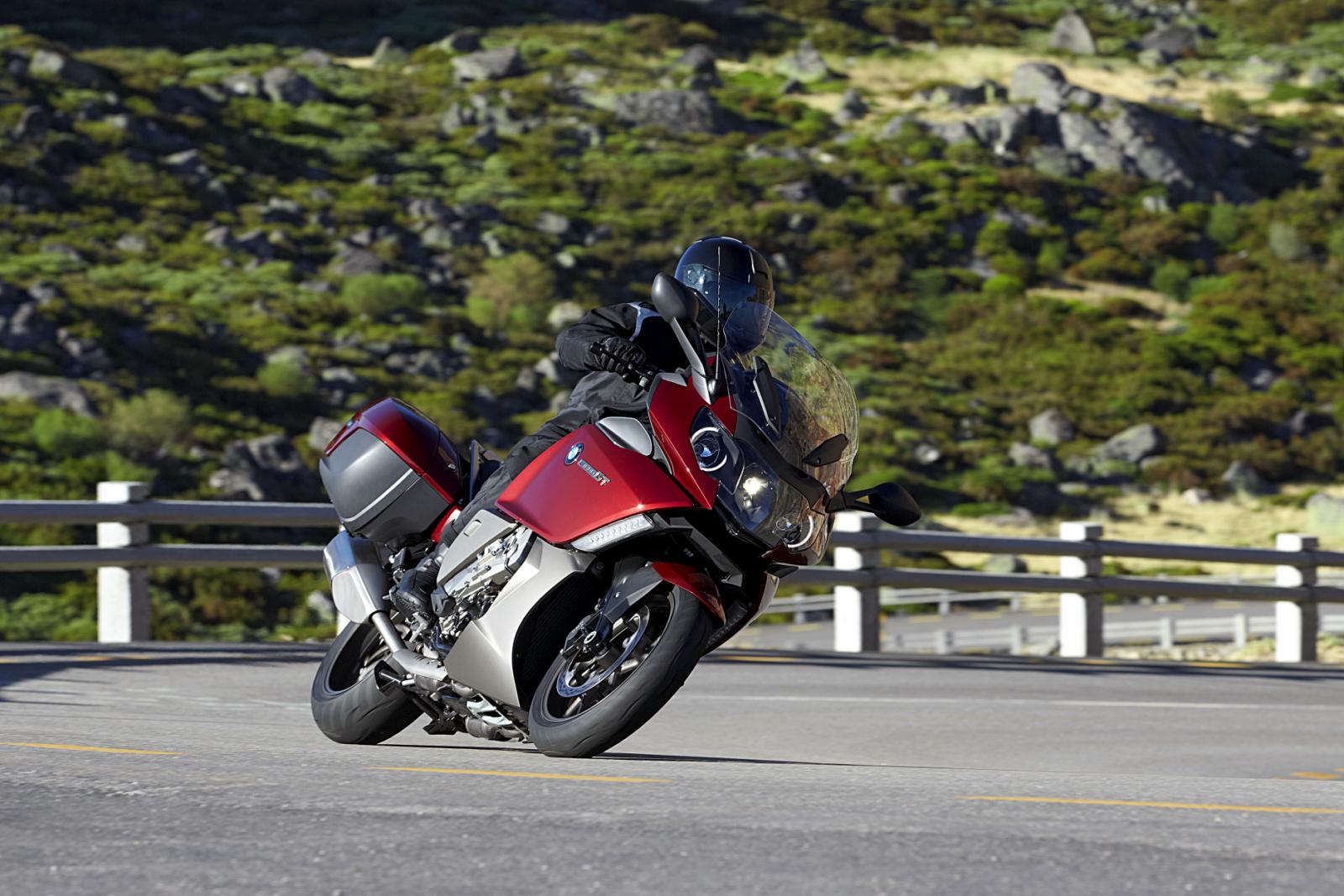Please understand, I mean that endearingly – the fat suit comment. At 702 lbs, the K1600 carries a lot of heft, but there are talents housed within its frame that render it sporty in a way no 700 lb bike should be. The K1600, then, is a curious machine, good at many seemingly contradictory things.
The police and my mother may not like it, but I’m a sport bike kinda guy. Thus, my perceptions are somewhat skewed when reviewing a luxury touring bike. I submit this to you early on in the interests of full disclosure. That said, I can put myself in the slippers of a lux-touring rider to gain an appreciation for the strengths and weaknesses of a machine tailor made for the job.
We put the K1600GT through its paces on every road surface and in the heart of every traffic condition known to Ontario roads. On an adventurous road trip, we got to the heart of this motorcycle, and discovered its true virtues and weaknesses.
A two wheeled 7 series?
That was my alternate title; I took the more daring path and risked sounding tabloid-esque. The K1600GT really is a 7 series for two, rolling on two. As far as motorcycles go, it doesn’t get any more luxurious, techy, or comfortable. I stand corrected: the K1600LT is slightly more comfortable and spacious, but these bikes are differentiated by little more than their panniers. The guts are the same.
And to call them guts is a bit undignified in the company of such distinguished metal – it’s time to call upon my 7 series vocabulary. The K1600 really does have that aura about it – one of sophistication and class. From the moment you approach – the alarm double chirping and flashing the LED lights to signal it’s disengaged – this bike makes its presence known.
The show continues when you insert and twist your key. The face of the K1600 is dramatically changed, its “eyes” lighting up with two corona rings staring back at you. This tribute to BMW automotive hallmark is edgy and attractive – we love it. But we’re still not done. Hit the starter button and a beam of brilliant white-almost-blue light will stream forth, first aimed at the ground, then swiveling up and down before coming to rest fixed on the road ahead. What you’ve just witnessed is the world’s first motorcycle-mounted xenon HID headlamp wringing its hands in preparation for the work ahead.
The headlight on this bike is easily one of its best and most celebrated features – it certainly is an ice-breaker with other motorcyclists (accept for the Harley crowd as anything that advances past 1903 is pretty much glittery gimmickry to their collective mind – better to impress them with a burn-out). It’s complex to be sure, but through advanced engineering, BMW has delivered yet another quantum leap in the field of motorcycling safety.
The problem with carving up roads on a motorcycle under cover of darkness is that as you bank the bike into a corner, the distance from its headlight to the road surface decreases, thus “lowering” the beam. In other words, as you lean into a corner, your light falls away. As you can imagine, this is a significant problem, especially in a corner, when information about what’s around the bend is crucial to the rider.
BMW’s solution is to mount the headlamp facing skyward within the headlight fixture. The beam of light is then reflected into a mirror positioned at the top of the fixture. The mirror is mounted on arms that are swung to and fro by tiny electric motors, adjusting the angle of reflection as need be to illuminate the road ahead. Using a gyro to determine true plum and front and rear ride-height sensors to determine pitch, the K1600’s computer arrives at the appropriate angle of reflection through its headlight mirror, and the result is a well-lit road, through any bend.
This all sounds impressive on paper, but it is truly amazing in practice. Add in the quality of light – a brilliant white beam from the xenon gas projector, and we have what is undoubtedly the best motorcycle headlight in the world. High-beam is provided by halogen gas – but don’t think it’s any less impressive. I don’t think I’ve ever witnessed brighter high-beams – on anything. These high-beams will sear the paint off of cars ahead, blind their drivers through the rear view mirror, and signal aliens to bugger off. They’re that bright. Maybe too bright? I’d have to ask the blinded driver ahead. My best advice: use them judiciously.
Further tech includes ABS brakes, traction control, cruise control, navigation, an on-board radio, USB plug-in, heated seats, heated grips, handlebar mounted iDrive, an automated windscreen that can be adjusted on the fly, and adjustable suspension. “Wait, iDrive?!” you exclaim. Yes, you read that correctly – BMW has pioneered their own motorcycle-fit version of iDrive, mounted on the left handbar at the thumb. The rotate/twist dial can be used to scan and select items in the bike’s onboard computer, including radio functions, suspension settings, heated seat controls, and so on.
Like I said, the K1600 is more or less a 7 series for two. In truth, an entire article could be written just about this bike’s tech, and it is impressive, but let’s get into the heart of the matter: how this bikes feels on the road.
Gaining clicks and shedding pounds.
The faster you go, the lighter the K1600 feels – almost to the point of a direct correlation. At stop and go speeds, it feels about twice as heavy as it is. Unlike a Harley touring bike – an Electra glide for example – the K1600 has its center of gravity sitting higher in the frame. The K1600 does not really enjoy crawling speeds because of its more “tippy” personality, coupled with its heft, and is more in its element in 2nd gear or higher.
The majority of my time spent atop this BMW came to pass on a Tiger’s game road trip. My best bud Calvin and I road from Toronto down to Detroit to catch the ball game, then we explored a few of Michigan’s more entertaining roads once in the mood.
Calvin rides an F800R, one of BMW’s lightest, most playful bikes. The difference in personality is vast, but then so is the mission.
Leaving Toronto, we were promptly caught in brutal gridlock traffic. Normally arduous, the hot ambient temperatures and constant attention required to keep the bike upright rendered this stop and go nearly unbearable. For that reason, I would give the K1600 a fail for anyone entertaining ownership in a city prone to traffic jams. There are better machines for the job.
As if the point wasn’t already driven home, we experienced a second traffic jam on the 401 through London where a car had found the ditch. This second bout of stop and go served to reinforce my sentiments of the preceding paragraph, while also enriching my experience for the rest of the ride – I had found a new appreciation for the open road.
The Tigers crushed the Indians to the tune of a 10-2 victory, and once the fireworks subsided we hit the night road to our place of rest. This was my first experience with the adaptive headlight and as I mentioned above – it’s mind-blowing tech.
During our exploits on curvy rural back roads we were caught out in a sudden flash-thunder storm. As the rain crashed down I was thankful for the protective fairings which nearly encapsulated me inside of the wind (and rain) stream. Calvin was not so lucky. Things got pretty extreme and in my helmet I remember thinking, “there’s no place like home, there’s no place like home” as a giant back-yard trampoline rolled up, out of a farm yard, and bounced across the road ahead of us, the sky dark and ominous. Before I could click my heals together, the winds subsided, leaving us totally drenched but confident we were indeed on a proper road-trip – the ingredient of adventure now checked off the list.
From this experience I grew to appreciate the K1600’s heft for its ability to fight off crosswind gusts. The massive cross-section of the bike does catch a lot of wind, but the weight of the bike helps to keep you out of the weeds when the wind blows from your side. Don’t worry, Calvin also survived, but with a great deal more counter steering into the gusts.
On open highway the K1600GT will deliver smooth, comfortable and relaxed riding. With its adaptive suspension in comfort mode, bumps are soaked up and vibrations from the road surface are absorbed. The seat is comfortable but my hind parts still grew tired after a few hours of consecutive riding; Corbin may have the answer.
Losing the fat suit.
Michigan’s posted speed limits are considerably higher than those of Ontario’s; that, coupled with twistier roads made for an entertaining ride home.
Over Toronto’s rough, patchy roads and along open, mostly straight highway, the K1600 delivers an exemplary ride as any luxury-touring bike ought to, but how does it handle when things get twisty?
Not well, at first. You see, I’d forgotten to switch the bike’s suspension to its tighter, sportier setting. As a result, when thrown into a corner, banked over at speed, the suspension bucked and bounced, loading up with grip then loafing back up repeatedly.
After switching the throttle, traction control, and suspension into its sportiest settings, the bike’s dynamics changed dramatically. Through the next bend the bike carved a tight line, well mated to the tarmac, and as the road continued, my smile grew bigger.
Apex speeds are slow, a consequence of the mass. After pounding it out, enjoying the full force of the engine’s power and brakes’ massive bite, I was always reminded of the heft mid-corner, as I was forced to slow to what felt like walking speeds. To this end, the K1600 goes and stops like a superbike (well, at least a 90’s superbike), but physics dictate that it handles like a tourer through corners.
That said, it handles like a surprisingly dynamic tourer. Again, BMW’s brilliant Paralever and Telelever suspension tech prevents dive and maintains excellent chassis control as you push harder. Speeds may ultimately be much slower, but considering that this bike is in fact one of the most luxurious and comfortable on the market, the duality of this bike’s dynamics is truly astounding. No lux-tourer should tear up a back road this well.
Inline 6 power.
BMW have built one of their most advanced inline 6 engines to date – and this time it comes mounted on a bike. In a nod to tradition, BMW have thus mixed their motorcycling history with their automotive history, and the result is a bike that feels more like a car.
Most motorcycles like – and need – to be revved, but this bike doesn’t. Honestly, I attempted a 4th gear start and the bike shrugged it off as if normal procedure. A massive 129 lb ft of torque is on tap from the mid-range to 5,250 rpm – that’s more torque than many small cars have on offer. No wonder 4th gear starts are a breeze (though not to be repeated, obviously).
Once traveling above 50 kph, the endless torque reserves of this engine made it feel as if a two-speed gear box would have been adequate. 1st and 5th are all you need; passes are accomplished with a twist of the throttle – downshifts are redundant.
Only after unleashing this 1.6 liter’s full rage did I appreciate the full performance spectrum of this bike. Spinning out 160 hp at 7,750 rpm, the engine goes on to redline at what I believe to be 8,600 rpm (it was a bit tricky to place the needle at an exact rpm on the tach), nailing 60 mph in a hair over 3 seconds in the process. The factory claims a 3.2 second 0-60 time, but I suspect that’s a bit conservative if you’re willing to launch the bike with brutality – I would easily give it 3.0 flat.
One of the tech highlights of this engine is its narrow width – this inline 6 is barely wider than a 4. This, thanks to the thinnest cylinder walls between pistons of any engine in mass production – so I’ve been told.
Fuel consumption averages 5.7 liters/100 km. I managed 5.4 l/100 km, and saw efficiency fall to 6.4 over more spirited stretches. The tank holds 24 liters, giving you near 400 km range per tank – an important factor for a touring bike.
Move over, Gold Wing.
Honda’s Gold Wing is massively appealing to a massive crowd. The Gold Wing is one of the most respected, and profitable motorcycles ever made. At first glance, the BMW doesn’t appear to be competition, but after looking over the numbers, I believe they are competitors. Any buyer considering a Gold Wing, who still has a wild side that thirsts for bursts of throttle and a few curves to carve will do well to test ride a K1600 before signing on the dotted line at the local Honda dealership. Think of the K1600 as a very comfortable, yet dynamic bike – a machine that will happily chug along at 2,000 rpm, carrying you in supreme comfort and advanced tech – yet always at the ready for a twisty back road.
The cost of admission in Canada is a reasonable $24,200. US prices are even more welcoming; although once you load the bike up with options the price will quickly climb.
Final musings.
BMW’s K1600GT is a difficult bike to place. It is a marvel of engineering on many levels. It is a brilliant touring bike, but makes for a terrible city hopper. It is shockingly dynamic when prodded to its limits, but geriatric apex speeds constantly remind you that it’s an awfully heavy sporting machine when it comes time to lean it over. Top this all off with a monstrous, fire-breathing engine that will give the anti-wheelie gizmo a regular workout and you have a truly unique bike, indeed.
With an engine stolen from an open-wheel formula car, you would expect this machine to give you tingles and excite your heart, but in my experience, it doesn’t. Every aspect of this bike is so refined, so techno-smooth, automated and effortless that excitement is left at the curb. Only at wide-open throttle does this bike excite – but WOT is totally contrary to the persona of this machine. It wants to be babied and ridden with poise, not thrashed about and pushed to its limits.
The K1600, then, is a luxury-touring bike to the core – with many tricks up its sleeve. Sportbike riders and city commuters need not apply, but if you see thousands of kilometers of open road ahead of you, it would be though to top this machine.


